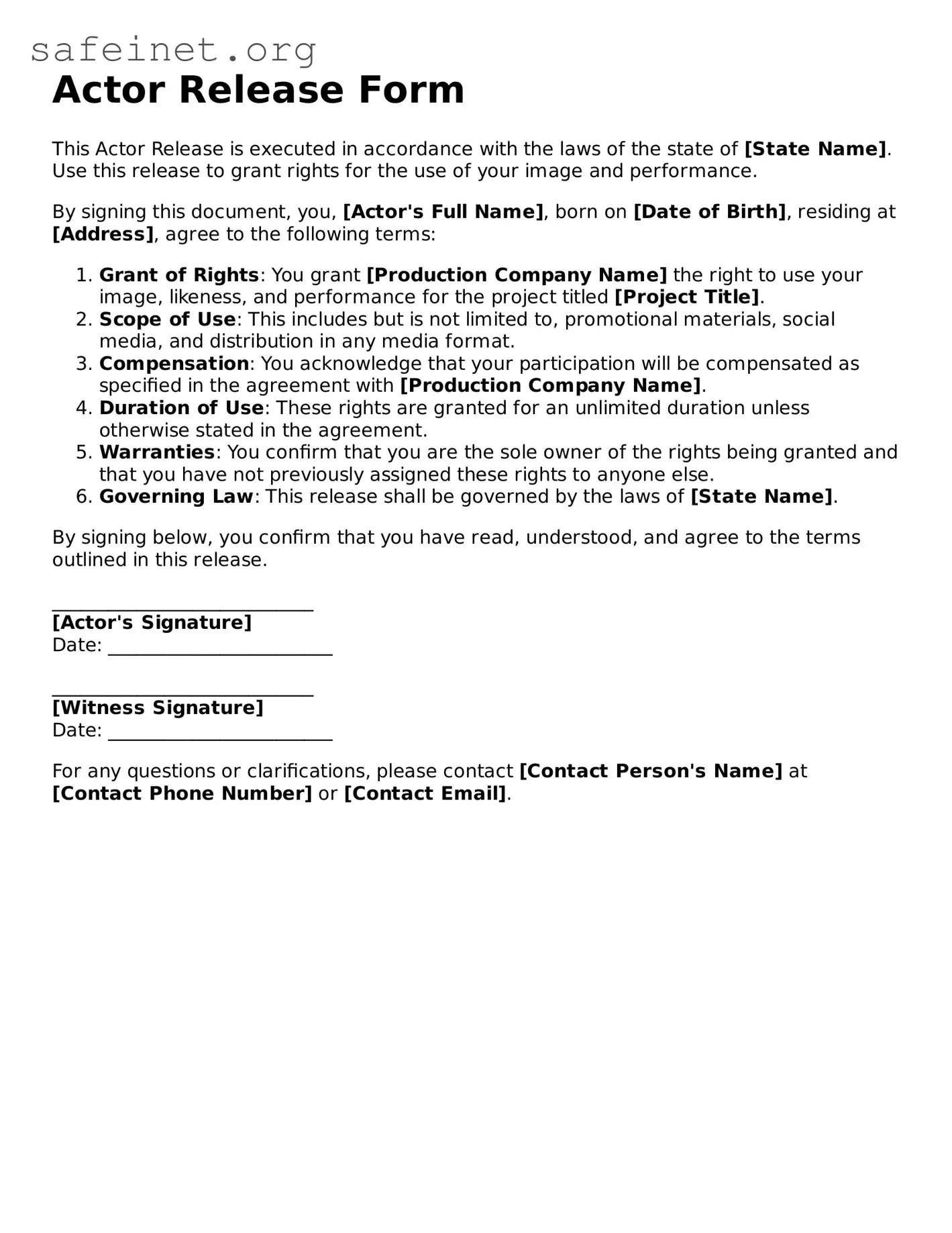The Actor Release form shares similarities with the Model Release form, which is commonly used in photography and modeling. Both documents grant permission for the use of an individual's likeness for commercial purposes. The Model Release outlines the extent of usage in photographs, ensuring that models understand their rights while protecting photographers from potential legal issues concerning image use.
Another document akin to the Actor Release is the Talent Release form, often utilized in film and television. This form secures the rights to use an actor's performance in a specific project. It clarifies the scope of usage, just as the Actor Release does, allowing producers to avoid disputes regarding consent after production.
The Music Release form is also comparable, as it pertains to authorizing the use of a musician’s work. Musicians sign this document for a defined period and specific purposes, similar to how actors agree to permit their performances to be captured and broadcasted. Both forms protect the creator's rights while allowing commercial exploitation.
The Video Release form is relevant, particularly in contexts involving social media and streaming platforms. Much like the Actor Release, it safeguards creators by ensuring that individuals featured in videos have consented to the recording and distribution of their image and voice. This protects against legal claims stemming from unauthorized usage.
Documenting a location's consent to film is akin to a Producer's Agreement in the film industry. This formal contract clarifies the permissions necessary to shoot at specific sites. Similar to how the Actor Release specifies usage rights for performers, this agreement ensures that location owners relinquish rights to their property temporarily.
The Photo Release form shares the same core purpose as the Actor Release by granting permission for the publication of specific images. It protects photographers and other entities involved from legal repercussions while confirming that subjects have agreed to the distribution of their images in various media formats.
The Content Release form is comparable in settings where individuals create content, such as internet videos or podcasts. Individuals sign this to grant permission for their contribution to be used, resembling the Actor Release. This document ensures that creators also retain appropriate credit and protection in various public forums.
Lastly, the Joint Ownership Agreement covers the collaborative aspect of works created by multiple parties. Similar to the Actor Release, this document is crucial in defining how each party's rights are managed and how profits from the production will be shared. It sets clear expectations to minimize potential conflicts down the line.
